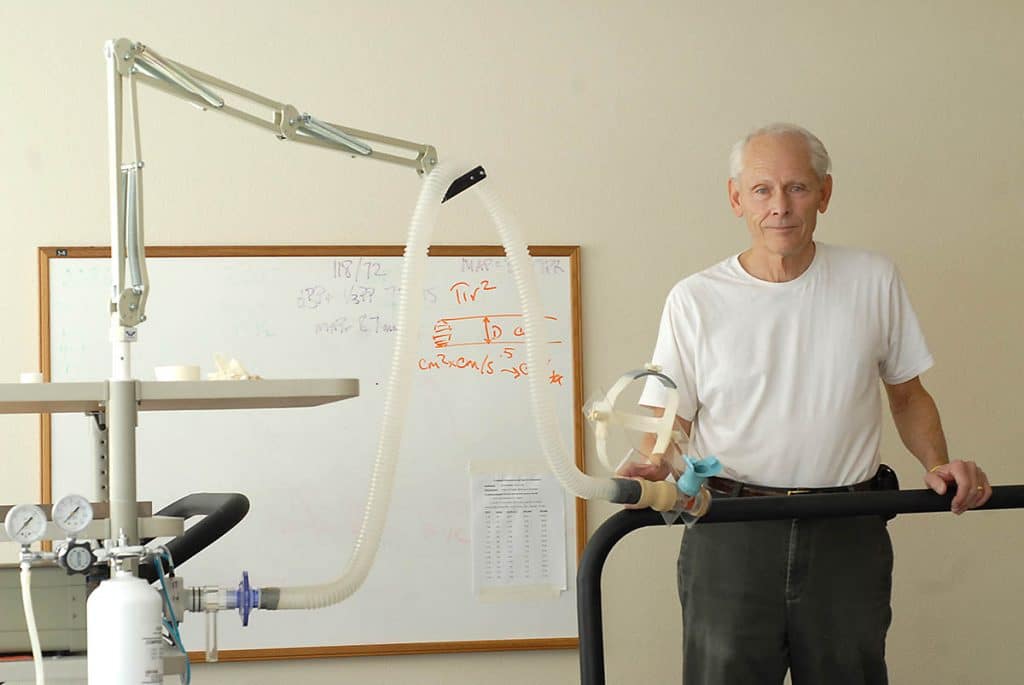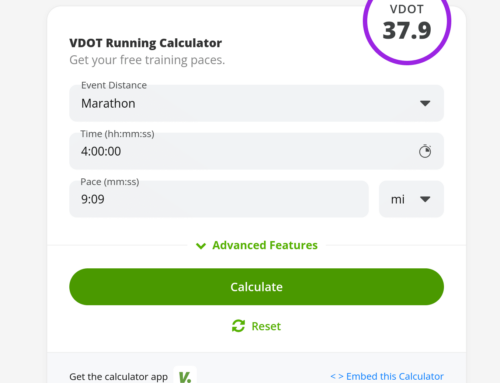
This table is for VDOT adjustments based on time away from running. As you improve your fitness with training, your VDOT improves, as do the various training intensities. The same thing applies when your fitness deteriorates due to a setback. If you haven’t engaged in cross-training, multiply the FVDOT-1 value in the table by your pre-setback VDOT to update your VDOT. If you’ve done cross-training while away from running, multiply FVDOT-2.
| Time Off From Running | FVDOT-1 | FVDOT-2 |
| Up to 5 days | 1.000 | 1.000 |
| 6 days | 0.997 | 0.998 |
| 7 days | 0.994 | 0.997 |
| 10 days | 0.985 | 0.992 |
| 14 days | 0.973 | 0.986 |
| 21 days | 0.952 | 0.976 |
| 28 days | 0.931 | 0.965 |
| 35 days | 0.910 | 0.955 |
| 42 days | 0.889 | 0.994 |
| 49 days | 0.868 | 0.934 |
| 56 days | 0.847 | 0.923 |
| 63 days | 0.826 | 0.913 |
| 70 days | 0.805 | 0.902 |
| 72 days or more | 0.800 | 0.900 |
For example, if you’ve taken two weeks off from training, your return-to-training VDOT should be 97.3% of the pre-setback VDOT. If during the break you cross-trained, use an adjustment of 0.986 instead of 0.973. To determine your pre-setback VDOT use the V.O2 app or the VDOT Calculator (available for free on Google Play and the App Store).
Weight-Adjusted VDOT
If you’ve lost or gained weight during your time off, you’ll need to adjust your VDOT to account for your weight change. Use the following method to figure your adjusted VDOT:
- (A) Enter your pre-setback weight in kilograms (weight in kilograms = weight in pounds x 0.454)
- (B) Enter pre-setback VDOT
- (C) Multiply (A) and (B) to get (C)
- (D) Divide (C) by current weight in kilograms to get (D)
(D) is your weight-adjusted VDOT. Apply the appropriate FVDOT value from the table above to (D) to determine the VDOT on which you should base your comeback training. Remember, once you resume racing, you should use race times to establish an updated VDOT.





Leave A Comment